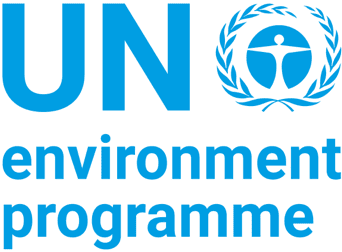Serge Salat
Green & Thriving Neighbourhoods
Explore how to develop green and thriving neighbourhoods in your city with an integrated vision, a set of design strategies, and a step-by-step delivery roadmap. By emphasizing the importance of local context, design, and integration, this course will inspire you to think differently about neighbourhoods and provide the necessary tools to take action.
Click here to enroll in: English | Spanish | French | Portuguese | Bahasa Indonesia | Mandarin
As urban life becomes the default human experience, it is crucial that national and local governments develop resilient and carbon-neutral cities where everybody thrives. To tackle this challenge, inclusive and coordinated policies, strategies and actions are required. Through a more holistic, systems-based approach, cities can achieve multiple environmental benefits and reduce infrastructure costs.
However, integrated planning at city scale can feel like an impossible task, both from a resource and operational point of view. The neighbourhood scale is an ideal entry point for cities to start implementing people-centered, holistic urban design strategies.
Targeted at urban decision-makers and planners, this course describes how to design a “green” neighbourhood layout that positively influences the microclimate and minimizes energy use, while promoting nature-based solutions, circular economy, local sourcing, and smart systems. The course also encourages early community engagement to help urban practitioners better understand people’s needs, motivations, and concerns and ensure that the neighbourhood becomes a place where everybody thrives.
LEARNING OBJECTIVES
This course aims to provide cities with integrated strategies to transform neighbourhoods across multiple sectors (such as land use, street design, housing, transport, economic development, water, waste, sanitation, public safety, education, and energy) and align multiple actors to have an enduring impact for all communities.
Localized, Integrated ModelCreate an integrated model for neighbourhood regeneration and new developments, contextualised to your community. |
Low-Carbon DesignImplement low-carbon and people-centred design at neighbourhood level for delivering sustainability, liveability, and better well-being and environmental outcomes. |
Policy & ToolsAcquire greater knowledge on actionable policy, process instruments, and financing tools to oversee the sustainable and integrated design of green and thriving neighbourhoods. |
Global UnderstandingIntegrate sustainability dimensions with quality urban design by better understanding the key methods that aim to achieve these strategies, and through a diversity of options and experiences from around the world. |
- Duration
-
8 hours
- Institution
-
UN Environment Programme
- Languages
-
English French, Spanish, Portuguese, Bahasa Indonesia and Mandarin Chinese
Course Outline
Section 1: Place-based StrategiesNeighbourhoods are not merely a collection of statistics or buildings; rather, they depend on the interaction between people, the environment, and architecture. Placemaking is bound to the creation of public spaces and streets as places for people, defined by the interplay of the built environment and voids. The section presents the transformative change potential of place-based actions, explaining how design decisions regarding public space, location, movement, connections, and biodiversity shape green and thriving neighbourhoods. |
Section 2: System-based StrategiesParallel actions on urban planning, sustainable design, infrastructure and cross-sector efficiency are required for a transition towards low-carbon and socially just cities. This section provides guidance on the organization of systems to make a neighbourhood resource–efficient, minimizing emissions and counteracting any residual emissions in a robust and transparent way.
|
Section 3: Socio-economic StrategiesGood neighbourhood design, either place-based or system-based, can positively influence the health of people in the community, provide economic opportunities for all, and ensure the safety of women and vulnerable communities. This section provides guidance on how holistic design can address cross-cutting issues such as community health, gender equity, and socio-economic vulnerabilities.
|
Section 4: A Roadmap for ImplementationSuccessfully developing a green and thriving neighbourhood requires a strategic and holistic approach; investing in standalone technical solutions is not enough. This section outlines a development roadmap for implementing placemaking, systems integration and socio-economic strategies in five core stages.
|
ADDITIONAL AUTHORS
- Emanuele Sciuva, Consultant, Urban Morphology & Complex Systems Institute
- Anton Larsen, Principal, MASS Design Group
- Lindsay Rasmussen, Senior Associate, RMI
- Sneha Sachar, Associate Director, ClimateWorks Foundation
- Anu Ramaswami, Professor, Princeton University
- Kirti Das, Postdoctoral Research Associate, Princeton University
- Carlos Moreno, Scientific Director, ETI Chair
- Catherine Gall, Executive Director, ETI Chair
- Alexandre Brunstein, Project Manager, ETI Chair
- Celia Martinez Juez, Programme Management Officer, UN Environment Programme
- Irene Fagotto, Programme Management Consultant, UN Environment Programme













